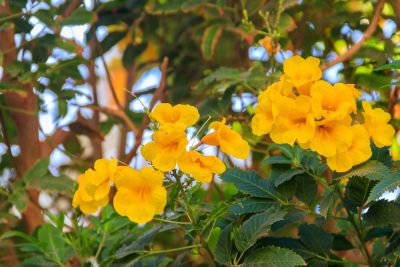Esperanza Growing Conditions
Esperanza plants need to be grown in warm conditions that closely mimic that of their native environments. In other areas they are usually grown in container where they can be overwintered indoors. While esperanza plants can tolerate a wide range of soil conditions, it’s preferable that they be given fertile, well-draining soil. Therefore, any poor soil should be amended with organic matter (i.e. compost) to improve its overall health and drainage. Part of esperanza growing conditions also requires that it be planted in full sun; however, afternoon shade is suitable as well.
Planting Esperanza
Many people choose to add in some slow-release fertilizer as they amend the soil prior to planting esperanza. They are usually planted in mid-spring, long after any threat of frost has ceased. The planting hole should be about two to three times the size of the root ball (when planted outdoors) and just as deep as the pots they were grown in. Allow at least three to four feet spacing between multiple plants. When planning esperanza seeds (two per pot) may be planted about an eighth of an inch (2.5 cm.) deep and misted with water. They should germinate within two to three weeks.
Esperanza Care
Esperanza care is easy. Since these are relatively low-maintenance plants once established, esperanza care is minimal and not too difficult. They require watering at least once a week, especially during hot weather. Container grown plants may need additional watering. The soil should dry out some between watering intervals. Also, a water-soluble fertilizer should be given at least every two weeks for container-grown plants, and about every four to six weeks for those planted in the ground. Cutting the seedpods on the esperanza plant will help promote continuous bloom. In addition, pruning may be necessary each spring to maintain both size and appearance. Cut off any leggy, old, or weak growth. These plants are easy to propagate as well, either by seed or through cuttings.
